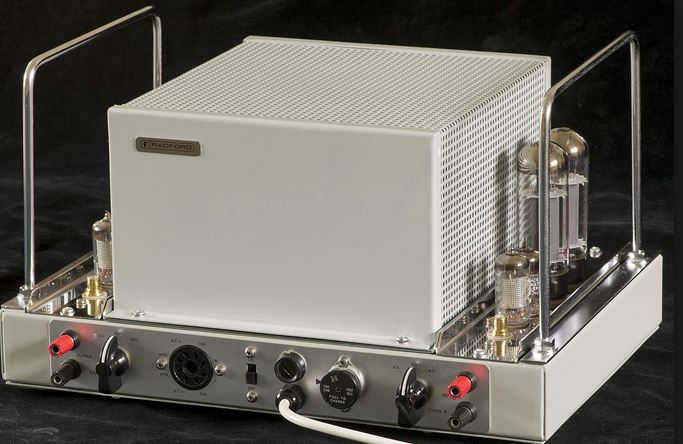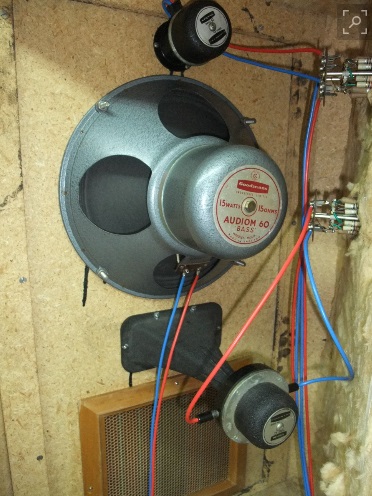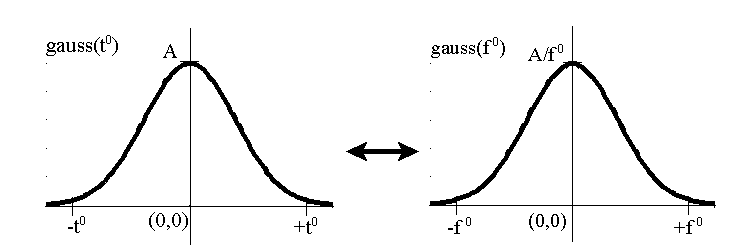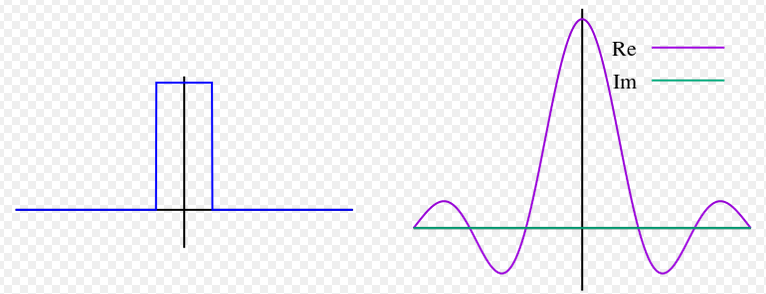I have long held the view that the rise time, i.e. the time between the application of a signal and the actual movement of the diaphragm, should be part of a speaker's specification. Step response tests which are useful if applied correctly seem to be cause of the fast woofer is a high frequency speaker statements. Applying a wide band test signal to a narrow bandwidth device can be misleading attempting to interpret results.
The way to measure rise time, is to use a resistor in series with the voice coil and view the time difference on an oscilloscope. The test method I use is based on an article by J.R. Ogilvie, published "Hi fi News", May 1965. Bass speakers that I consider to be worthy contenders have rise times of 100 micro Secs or less tested on a small baffle. I prefer vented enclosures of the Butterworth fourth order style and that the Fs/Fb should be as low as possible considering this T & S alignment, certainly 35 Hz or below. I also prefer a Qts figure that is lower than the referenced 0.38 mark, especially with speaker diameters of 12'' or larger. Remember that in stereo or multi-channel reproduction, mutual coupling occurs and this factor should not be ignored.
The way to measure rise time, is to use a resistor in series with the voice coil and view the time difference on an oscilloscope. The test method I use is based on an article by J.R. Ogilvie, published "Hi fi News", May 1965. Bass speakers that I consider to be worthy contenders have rise times of 100 micro Secs or less tested on a small baffle. I prefer vented enclosures of the Butterworth fourth order style and that the Fs/Fb should be as low as possible considering this T & S alignment, certainly 35 Hz or below. I also prefer a Qts figure that is lower than the referenced 0.38 mark, especially with speaker diameters of 12'' or larger. Remember that in stereo or multi-channel reproduction, mutual coupling occurs and this factor should not be ignored.
No, VaNarn. I don't buy it. Reflex is slow at the bottom end. Simple as. Timing is all wrong. It's because the port is half a wavelength behind the bass cone. Hemholtz Resonance. Reflex is popular because it's cheaper and more compact. Doesn't make it right.
@ geotone: I'd be very surprised if cspieker doesn't prefer the (stuffed port) closed box speaker for its great timing!
@ jjasniew: this is a more complicated answer.
I grew up in the 1960's, possibly slightly privileged, surrounded by great sounding Radio and HiFi systems. I also later spent a lot of time at things like the BBC Proms at the Albert Hall in London listening to live music.
If anybody thinks a home HiFi can even start to resemble the live experience of, say, the huge 100 piece Leipzig Gewandhaus Orchestra in a big venue, please leave the room NOW!
Nevertheless, I had an eye-opening experience with an intimate and small recording of the acoustic band: "The Strawbs, live at the Queen Elisabeth Hall".
I think the front end was a Garrard 401 LP turntable, Decca London tonearm, Decca FFSS LP cartridge.
Amp was a Radford Valve Amp:

Speakers were some huge, maybe 6 cubic foot 12" plus 3" Goodmans closed boxes built into the library walls of a big, well carpeted room. This sort of thing.

I tell you, you thought you were actually in the Concert Hall! That good.
Well, time went by. My brother-in-law upgraded his system to Marantz transistor amps. Huge transmission line IMF speakers. It actually sounded worse.
It's interesting to me that valve amps still have a huge niche market: Valve Amplifiers & Hi Fi Equipment | Buy Online | Icon Audio
TBH, I want one, albeit they cost big bucks. And also interesting, they detest complex reflex loads, much preferring flat impedance and, at worst, the simple omega peak of closed box.
There is an interesting relationship that Radio and Antenna engineers are familiar with:
Smooth functions in frequency lead to smooth functions in the far field:

Brick-wall functions lead to horrible time delay:

What I am saying is Reflex is steep, Closed Box is shallow.
Further reading for the interested student:
Acoustic Research Speakers: A Glorious Time: AR's Edgar Villchur and Roy Allison | Stereophile.com
Information Theory: Information theory - Wikipedia
@ geotone: I'd be very surprised if cspieker doesn't prefer the (stuffed port) closed box speaker for its great timing!
@ jjasniew: this is a more complicated answer.
I grew up in the 1960's, possibly slightly privileged, surrounded by great sounding Radio and HiFi systems. I also later spent a lot of time at things like the BBC Proms at the Albert Hall in London listening to live music.
If anybody thinks a home HiFi can even start to resemble the live experience of, say, the huge 100 piece Leipzig Gewandhaus Orchestra in a big venue, please leave the room NOW!
Nevertheless, I had an eye-opening experience with an intimate and small recording of the acoustic band: "The Strawbs, live at the Queen Elisabeth Hall".
I think the front end was a Garrard 401 LP turntable, Decca London tonearm, Decca FFSS LP cartridge.
Amp was a Radford Valve Amp:
Speakers were some huge, maybe 6 cubic foot 12" plus 3" Goodmans closed boxes built into the library walls of a big, well carpeted room. This sort of thing.
I tell you, you thought you were actually in the Concert Hall! That good.
Well, time went by. My brother-in-law upgraded his system to Marantz transistor amps. Huge transmission line IMF speakers. It actually sounded worse.
It's interesting to me that valve amps still have a huge niche market: Valve Amplifiers & Hi Fi Equipment | Buy Online | Icon Audio
TBH, I want one, albeit they cost big bucks. And also interesting, they detest complex reflex loads, much preferring flat impedance and, at worst, the simple omega peak of closed box.
There is an interesting relationship that Radio and Antenna engineers are familiar with:
Smooth functions in frequency lead to smooth functions in the far field:
Brick-wall functions lead to horrible time delay:
What I am saying is Reflex is steep, Closed Box is shallow.
Further reading for the interested student:
Acoustic Research Speakers: A Glorious Time: AR's Edgar Villchur and Roy Allison | Stereophile.com
Information Theory: Information theory - Wikipedia
Last edited:
System 7 if you have doubts about my views then express them in such a way that the crux of your argument can be discussed. Vented enclosures of the T & S B4 variety have the major part of their output supplied in phase quadrature with the driving speaker, around the Fb point. What happens below that range is the issue and competent designers keep it as low as possible consistent with the allowable size of the enclosure ( 35 Hz and below, in case you missed that, the first time around). Properly designed reflex enclosures with suitable bass speakers are not necessarily cheaper to build than a sealed box and your statement as such needs a technical qualification. Stuffing a port with fibrous material is merely a way to overcome the boom of a badly designed vented enclosure . Too many commercial speakers are made to sound impressive in the hi fi shops as boom and tizz helps for a sale to the un-initiated purchaser.
It was the Duke, Steve, not the Count.
And you might look at the speaker alignment articles at Curt's Speaker Page(Curt Campbell).
He has a detailed explanation of the sort of alignment I have long favored when faced with a reflex-type woofer, and the sort of graphs you enjoy showing group delay and rolloffs with various setups(closed and vented).
And you might look at the speaker alignment articles at Curt's Speaker Page(Curt Campbell).
He has a detailed explanation of the sort of alignment I have long favored when faced with a reflex-type woofer, and the sort of graphs you enjoy showing group delay and rolloffs with various setups(closed and vented).
Last edited:
In which way is it different? Which one do you prefer?
Running the cabinets vented softens transients. Sealed is much better. On most tracks you can't tell much difference, but on certain tracks it is obviously more crisp and impactful on the bass. I can't recall the tuning frequency of the vented alignment, but it is way below 35hz. It is a well damped alignment with no hump before roll off. I remember verifying the tuning frequency with a Dayton woofer tester and found it to be just as modeled.
I believe the problem is that most people have not heard large frontloaded horns or planar wave horns like for example the ROAR series, with a low Q - high Bl driver, powered by an no-global-negative-feedback amplifier with a negative output impedance.
Once you do you will hear how miserably bad most bass speakers are at reproducing non-linear non-sinusoidal waveforms. A drum transient is an extremely asymmetrical waveshape where the leading edge transient is made by displacing a lot of air very fast. Please don't tell me that a normal one inch dome tweeter can displace half a liter of air in a few milliseconds.
This old refuted idea that music is simple nice sinewaves and simple math can define and explain everything without using very computational intense nonlinear dynamics is quite obstructive for any true development within the audio field.
Build a ROAR with a B&C 18IPAL and power it by a simple no-negative feedback amp with minus 0,5 ohms output impedance and you will be enlightened. It will not sound very nice though. Once you start to enable reproduction of nonlinear non-sinusoidal waveforms the character becomes very very physically "hard", tactile and overwhelming. Just like the difference between the quite lame exploive cracks of fireworks compared to the shockwave created by the hypersonic detonation speed of military explosives.
Once you do you will hear how miserably bad most bass speakers are at reproducing non-linear non-sinusoidal waveforms. A drum transient is an extremely asymmetrical waveshape where the leading edge transient is made by displacing a lot of air very fast. Please don't tell me that a normal one inch dome tweeter can displace half a liter of air in a few milliseconds.
This old refuted idea that music is simple nice sinewaves and simple math can define and explain everything without using very computational intense nonlinear dynamics is quite obstructive for any true development within the audio field.
Build a ROAR with a B&C 18IPAL and power it by a simple no-negative feedback amp with minus 0,5 ohms output impedance and you will be enlightened. It will not sound very nice though. Once you start to enable reproduction of nonlinear non-sinusoidal waveforms the character becomes very very physically "hard", tactile and overwhelming. Just like the difference between the quite lame exploive cracks of fireworks compared to the shockwave created by the hypersonic detonation speed of military explosives.
Some measurements would be interesting. Also what has a tweeter displacement got to do with it?A drum transient is an extremely asymmetrical waveshape where the leading edge transient is made by displacing a lot of air very fast. Please don't tell me that a normal one inch dome tweeter can displace half a liter of air in a few milliseconds.
In the most simple terms, if you want accurate bass you need a woofer with cut off frequency well below the lowest frequency you wish to reproduce accurately. For example, the fist figure below shows reproduction of a complex signal, made up of fundamental and several harmonics, when the cut off frequency is the same as the fundamental of the signal. The second figure shows the reproduction of the same signal by a woofer with the same alignment but with the cut off frequency an octave below the fundamental of the input signal.
Red is the input, blue the speaker output.
Red is the input, blue the speaker output.
An externally hosted image should be here but it was not working when we last tested it.
An externally hosted image should be here but it was not working when we last tested it.
Same thing but with Q = 0.5
Not that the higher Q woofer provides more accurate reproduction when the cut off is an octave below the fundamental of the input signal. The reasons being flatter response in region of the frequencies contained in the input. It should be realized that these woofers are minimum phase. Thus phase is related to amplitude, thus group delay is related to amplitude. When computing the minimum phase at a given frequency, an integral over frequency from DC to infinity is performed. The frequency is weighed in the integral, placing the heaviest weight on the frequency in question. Thus, if the frequency is flat around the frequency in question, the phase tends towards zero. Thus since the Q = 1 response is flatter than the Q = 0.5 response above the fundamental of the input, the GD is also less above the fundamental. The result being less amplitude and phase distortion in the output.
An externally hosted image should be here but it was not working when we last tested it.
An externally hosted image should be here but it was not working when we last tested it.
Not that the higher Q woofer provides more accurate reproduction when the cut off is an octave below the fundamental of the input signal. The reasons being flatter response in region of the frequencies contained in the input. It should be realized that these woofers are minimum phase. Thus phase is related to amplitude, thus group delay is related to amplitude. When computing the minimum phase at a given frequency, an integral over frequency from DC to infinity is performed. The frequency is weighed in the integral, placing the heaviest weight on the frequency in question. Thus, if the frequency is flat around the frequency in question, the phase tends towards zero. Thus since the Q = 1 response is flatter than the Q = 0.5 response above the fundamental of the input, the GD is also less above the fundamental. The result being less amplitude and phase distortion in the output.
Last edited:
In the most simple terms, if you want accurate bass you need a woofer with cut off frequency well below the lowest frequency you wish to reproduce accurately.
I have been following this thread with interest. I agree with John K. And his statement is especially true for vented systems.
A vented box system with a smooth shallow roll-off and an F3 of 20 Hz is likely to have excellent transient response... Why? because almost all musical content is above 40 Hz. The little bit of content that goes down to 32 Hz and below is not transient in nature.
The above box starts off with a very shallow roll-off of 6 db/octave... of course it eventually gets to 24 db/octave, but way down in the subsonic where it doesn't matter. Almost all musical content is a full octave above the tuning frequency and the F3 point.
Conversely, a vented box system with a 4th order rolloff in the middle of the bass range... i.e. an F3 of 55 Hz, well this is going to sound just as System7 described.
I like the sound of large vented speakers, but I have rarely liked the sound of small ones. For a small speaker, I would prefer a sealed box.
Last edited:
Just one othe rpoint about my figures. Please take note of the behavior of the response at the beginning of the signal (left) and during the first cycle. Note that it is different than the 2nd and on cycles. This shows the transient nature of the response to the input. Again, the Q = 1, with lower cut off is the best.
Transients produced and transients heard are widely different. There is the room in between.
Well said.
The little bit of content that goes down to 32 Hz and below is not transient in nature.
Agreed !
For a small speaker, I would prefer a sealed box.
dito !
Regards
Charles
A loudspeaker is an electro mechanical device which has a mechanical impedance equal to Re/BL² and a moving mass . This forms a first order low pass function with cut frequency which by adding a spring will become equal to Fr/Qes. At this frequency the transient has already lost half of it's transient power if the diagram is still moving rigidity. Either the diaphragm must start break down so that the moving mass becomes lighter with frequency or relayed by a low mid speaker. For horn or scoop loaded speakers, 2×fr/Qes is used. Speakers intended for closed enclosure have Fr/Qes of ≈50 for bass reflex 100 to 150 . The coil inductance decreases slightly this frequency.
Last edited:
"What I am saying is Reflex is steep, Closed Box is shallow."
that is partly true. you can get a reflex rolloff that has a shallower response then a closed box, at least partly and where it counts
you will most likely get a better match to the room gain with an ebs alignment
that is partly true. you can get a reflex rolloff that has a shallower response then a closed box, at least partly and where it counts
you will most likely get a better match to the room gain with an ebs alignment
It's ridiculous to try to get a heavy woofer cone moving accurately in synch with the input signal without corrective motional feedback*. What screwball electronic engineer would ever design am amp without feedback? Likewise for speakers where the weight of the cone is monumentally mismatched to the air it is pushing.
Anyone who has tried MFB will nod when I say: in the future, people will look back on non-feedback speakers as crude indeed, just as we look back on amps from early in the 20th century.
B.
* there is a small amount of beneficial degenerative feedback provided by sealed enclosures, assuming the behaviour of the interior air is more linear than the driver
Anyone who has tried MFB will nod when I say: in the future, people will look back on non-feedback speakers as crude indeed, just as we look back on amps from early in the 20th century.
B.
* there is a small amount of beneficial degenerative feedback provided by sealed enclosures, assuming the behaviour of the interior air is more linear than the driver
Last edited:
No, VaNarn. I don't buy it. Reflex is slow at the bottom end. Simple as. Timing is all wrong. It's because the port is half a wavelength behind the bass cone. Hemholtz Resonance. Reflex is popular because it's cheaper and more compact. Doesn't make it right.
Bit of a blanket statement, methinks.
"Right" or "wrong" mostly depends on the final cut-off frequency, as well as the initial slope below it.
A 15" woofer in an over-damped reflex box with an Fb = 20-25 Hz sounds VASTLY different from a puny 6" mid-woofer in a reflex box tuned "flat" but with an Fb = 50-55Hz.
Speakers were some huge, maybe 6 cubic foot 12" plus 3" Goodmans closed boxes built into the library walls of a big, well carpeted room. This sort of thing.
Proves my point, I think.
I bet the reason said speaker sounded more realistic has little to do with it being a sealed box, and a LOT to do with it employing an old-school, dynamic 12" with a low resonance.
Most people are just so used to small and inefficient speakers nowadays that they have little idea how realistic a properly designed large speaker can sound, sealed or vented. (And please, don't misquote me: I said "properly designed", and "can" sound!)
In the most simple terms, if you want accurate bass you need a woofer with cut off frequency well below the lowest frequency you wish to reproduce accurately. For example, the fist figure below shows reproduction of a complex signal, made up of fundamental and several harmonics, when the cut off frequency is the same as the fundamental of the signal. The second figure shows the reproduction of the same signal by a woofer with the same alignment but with the cut off frequency an octave below the fundamental of the input signal.
Red is the input, blue the speaker output.
An externally hosted image should be here but it was not working when we last tested it.
An externally hosted image should be here but it was not working when we last tested it.
Sounds super to-the-point, but the figures aren't showing...
"What I am saying is Reflex is steep, Closed Box is shallow."
that is partly true. you can get a reflex rolloff that has a shallower response then a closed box, at least partly and where it counts
Exactly.
See: Snyder P.J., Simple Formulas and Graphs for the Design of Vented Loudspeaker Systems. 58th Convention of the AES, November 1977. Figures 1-7.
Sounds super to-the-point, but the figures aren't showing...
Must be your browser. They show for me.
- Status
- This old topic is closed. If you want to reopen this topic, contact a moderator using the "Report Post" button.
- Home
- Loudspeakers
- Multi-Way
- Back to Transients. Understanding "Q" and myths of bass